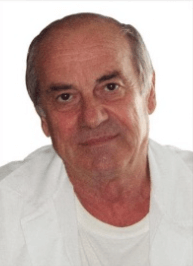1 in 5 South Africans suffer from chronic pain, and 30.5% of these suffer from chronic back pain. But there’s a way to treat back pain that is offering hope to thousands…1
WHAT IS PAIN?
Pain provides an immediate warning signal that there is a severe energy deficit in cells and tissue2. By nature of its action, coMra therapy is ideally positioned to address this fundamental deficit. coMra therapy enhances the efficiency of energy metabolism and thus accelerates the restoration of energy balance in affected cells and tissue. One of the primary effects is a relief from pain.
Download the coMra e-book for more information on coMra therapy
coMra therapy combines low-level laser therapy with the healing radiances of colour, magnetism and (in the Delta) ultrasound to treat pain and many other conditions. Read our coMra 101 blog and How it Works: coMra therapy blog for more on how it works.
TESTIMONIAL

“When I tried the Delta Laser a couple of years ago, I could not complete the first treatment because I fell asleep from the sudden pain relief. After just a few days I could sleep peacefully at nights, with no drugs and soon my walking started to improve. I realised that as far as efficiency and speed are concerned, this new laser had no comparison with the previous one I had been treated with. After a couple of months, I dropped using the stick and later even the numbness in my left foot, which had been a big problem while driving, greatly diminished.”
TREATING BACK PAIN WITH COMRA THERAPY
The recommended treatments for treating back pain are Traumatology 17 and Traumatology 2.
Traumatology 17
This treatment (as found in the coMra User Guide) is the primary treatment that can be used to treat back injuries likea slipped disc or spinal stenosis. It can be applied twice daily until your symptoms improve, then used once daily for another 2 weeks before allowing a rest period.
- From coccyx to occiput at 10cm intervals: 1 minute per point @ 1000Hz
- Along both sides of vertebral column through long extensors at 10cm intervals: 1 minute per point @ 50Hz
- Area of affected disc or vertebrae: 2 minutes @ 50Hz
Traumatology 2

● Treat the affected muscles at intervals of 5cm: 1 minute per point @ Variable (V)
● Scan paravertebral zone to treat nerve source of the affected area: 5 minutes per side @ 1000Hz
● If the affected muscles are in the legs, scan both sides of the lumbosacral spine: 5 minutes per side @ 1000Hz
Treatment Duration
In situations of chronic pain and significant injury, the initial pain relief after coMra therapy may sometimes last only a few hours and then the pain returns. This should not be confused with the short-lasting effects of analgesic drugs. In these cases, coMra therapy treatments should be continued for weeks, months and in some cases even years, where there has been severe damage to the nervous system. The prolonged treatment allows the ultrastructural damage to cells to be repaired and restored enough for energy metabolism to become self-sufficient.
1 Almost 1 in 5 South African adults have chronic pain: a prevalence study conducted in a large nationally representative sample2 Liedtke, R.K. 2009. A general theory on pain as an integrated thermodynamic mechanism. Medical Hypotheses no. 73 (1):86-9. doi: 10.1016/j.mehy.2009.01.026.




